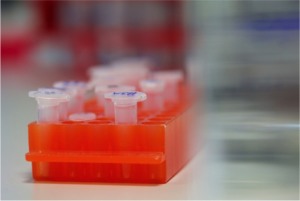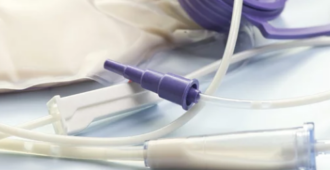The 25th International Symposium on ALS/MND began today in Brussels, Belgium. More than 900 delegates joined the opening session to hear Dr Alfred Sandrock from Biogen Idec’s opening talk.

The only proven drug for MND is riluzole. This is the only treatment to have passed all stages of clinical trial testing, showing it to be both safe and beneficial in MND. New treatments are desperately needed, but what is needed to advance a treatment that has shown promise in animals to humans?
One of our Association’s mission statements is to fund and promote research that leads to new understanding and treatments, and brings us closer to a cure for MND. Dr Sandrock’s opening presentation relates directly to this statement, asking ‘what can we learn and how do we move forward?’
Before we even start…
Clinical trials are the ‘gold standard’, ensuring that potential new drugs are both safe and beneficial for a specific disease. It is only by passing clinical trials that a drug can truly prove that it is beneficial in humans.
Before the clinical trial process even begins, researchers need to start by identifying a ‘drug target’.
For example, this may be a faulty protein that causes the cell to self destruct!
By targeting this specific protein, or the process that leads to self destruction, researchers can develop targeted treatments that prevent this process from happening, with the ultimate aim of slowing or delaying the disease.
The first step of designing and testing a drug begins in ‘cellular models’ of MND. Today, these cellular models can be induced pluripotent stem cell (iPSC) derived human motor neurones, creating a model of MND ‘in a dish’ (find out more about this technology here). By testing potential drugs on cells the researchers can quickly see whether they survive longer and whether or not a drug may be beneficial.
After testing a potential new drug on cellular models, researchers then need to test on animals. These are most commonly flies, mice and zebrafish. Potential drugs are first tested on animals (this way any drug that is potentially unsafe is screened out at this initial stage). Testing a drug on cells can only tell us so much, how a drug acts in a complete ‘animal’ system can tell us so much more.
Clinical trials
Phase I clinical trials are the first stage, assessing safety only in a small number of people (10-20). Once a drug is shown to be safe it then enters Phase II clinical trial testing to find out if the drug is safe and well-tolerated in a larger number of people living with the disease (100s). During Phase II testing the researchers also aim to identify the best dosage of the drug, as well as the most optimum delivery method (eg via intravenous injection or tablet form).
The next stage is Phase III. This is where the researchers trial a drug to find out if it truly is beneficial against the disease. This involves hundreds to thousands of people, and if a drug is found to be beneficial it can then apply for regulatory approval.
Regulatory approval is the process where a drug goes from a trial drug to a treatment. If the regulatory body is satisfied with all the clinical trial data (in Europe this is the European Medicines Agency), the drug can then go on to be marketed. However, even at this final stage (known as Phase IV) the drug company will still collect data.
What is needed to advance drugs into clinical trials?

Dr Sandrock highlighted that we are really beginning to understand the causes of MND. This is primarily thanks to genetics, which has opened up numerous pathways for us to target with potential new drugs. The next step, developing and conducting phase I and II clinical trials however, still needs some work.
Dr Sandrock emphasised that we are really good at designing phase III trials, but this in-between step seems to be a problem. He highlighted that this is mainly caused by small sample sizes, as well as the variability of disease progression between trial participants.
A way to address this would be to develop an effective biomarker and Dr Sandrock stressed that this is where our primarily focus should be. “If we had a biomarker we could then screen participants with similar disease progression, enabling us to monitor the true effects of a drug.”
Looking to the future

Dr Brian Dickie, our Director of Research said: “The path from the bench to the bedside, is long, dark, and full of many pitfalls along the way. MND has seen a number of drugs that have shown real promise at earlier stages of development fail, with the beneficial effects seen in the labs (or in small trials) not replicated in the larger, definitive phase III trials.
This is because MND is an incredibly complex disease, and we still only understand the tip of the iceberg. We are gaining new knowledge every day, but we also need to make sure we learn as much as we can from past experience if we are to understand MND better and find out what triggers the motor neurones to die. Once we know how this happens we can then go on to develop potentially more effective treatments. It is only by the research community working together in identifying the causes, finding the biomarkers and then developing treatments, that we can achieve our vision of a world free from MND.”
The final word
Dr Sandrock said: “In conclusion, what do we need to advance a drug into clinical trials? The answer is that we need an effective drug, that targets a specific process involved in MND, plus biomarkers. This will then allow us to conduct experiments to test a promising therapeutic hypothesis. Aided by genetics, we are in an era to totally redefine MND.”






An interesting price on how drug safety can be ensured in clinical trials. Thanks for sharing!